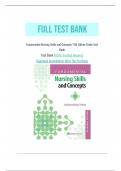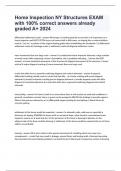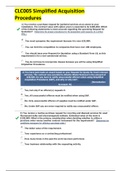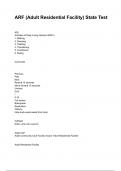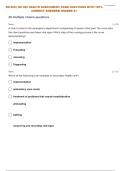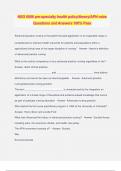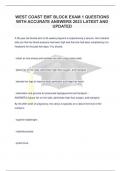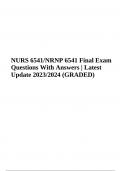Exam (elaborations)
Test Bank - Timby's Fundamental Nursing Skills and Concepts 11th Edition by Donnelly-Moreno
Test Bank - Timby's Fundamental Nursing Skills and Concepts 11th Edition by Donnelly-Moreno. UNIT 1 Exploring Contemporary Nursing Chapter 1 Nursing Foundations Chapter 2 Nursing Process UNIT 2 Integrating Basic Concepts Chapter 3 Laws and Ethics Chapter 4 Health ...
[Show more]
